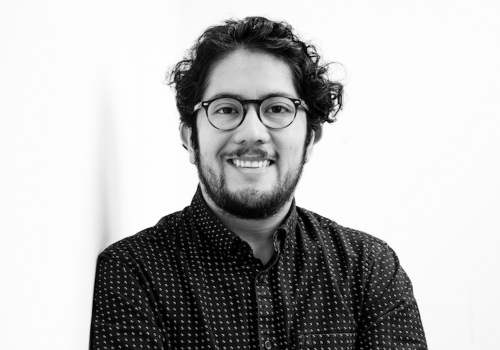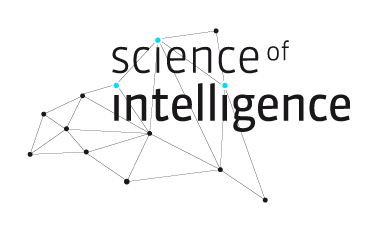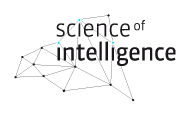
INTERVIEW: Luis Gómez on collective behavior and being a researcher at SCIoI
Luis Gómez is a postdoctoral researcher at Science of Intelligence, working in the research group of Pawel Romanczuk. Together with doctoral researcher Robert Lange and PI Henning Sprekeler, he focuses on quantifying and modelling collective behavior of fish living in their natural environment. We asked him about his project and his academic life at SCIoI, and here is what he told us.
Many SCIoI projects focusing on collective behavior focus on fish in the artificial environment of the fish tank. Your project studies fish in their natural environment. Could you tell us a bit more about that?
That’s right, we are looking at collective behavior of animals in nature, and in particular we are investigating a fish, Poecilia sulphuraria, known as sulphur molly, which lives in sulphur-rich ponds in Tabasco, Mexico. Because of the low oxygen content of these ponds’ waters, the fish live close to the surface, where oxygen contents are higher. This makes the group effectively a two-dimensional system. The advantage of living in such inhospitable waters is that this species is practically alone in the pond, meaning they have no predators in the water. But although the water is relatively safe, there is predation from the outside, with birds attacking and eating the fish. When that happens, the mollies collectively dive towards the bottom in a synchronized way, which can be observed on the surface in the form of small splashes that collectively form a wave that spreads outwards on the surface. The most interesting part of all this is that these waves also happen at times when there are no birds attacking, which means that sometimes the system gets triggered by the actions of some individuals who are more prone to escaping, maybe because they are overreactive, scared, or sensitive to external perturbations. We are trying to understand which mechanisms at the individual level might be responsible for such a collective behavior. Something that I really like about our project is the fruitful collaboration that Pawel and I have had with Robert and Henning, which has allowed us to enrich the study of the system using, on the one hand, theoretical physics and, on the other hand, computer science.
You have a physics background: how does physics come into play in a project like this?
As far as my personal background is concerned, I locate myself between biology and physics. While doing my PhD in France, I learned to apply many of the tools I learned from my studies in classical physics into biological systems, and then adapted that knowledge to ecosystems consisting of many individuals.
How does this apply to your current project?
We are studying the system mathematically, using various tools that include computer vision, physics and machine learning. When observing the dynamics of this behavior, we saw that it’s is similar, mathematically speaking, to a critical system, meaning a system that is between two different phases, one where not much is happening and the other being one of high activity, in a chaotic way. In our context, this is ecologically relevant, because if it’s true, and our data suggests that it is, then we can assume that the fish profit on this property.
Was your research affected by the lockdown in any way?
Yes, well, just to give some background, we took videos of the surface of the water after perturbations (i.e. after the collective escapes) and we converted these videos into black-and-white pixels, where white areas are regions of the pond where you see a wave spreading, and this helped us quantify the sizes of the waves. This particular part of the analysis took place right at the beginning of Covid, during the first lockdown, which means I had to learn how to do it, and do it, alone ––– it was challenging, but I definitely learned a lot. I guess the good thing is that I really had the time to concentrate and do it. And there’s been another negative effect of the pandemic. We were meant to go to Mexico in March or April 2020, but we had to cancel the trip. Hopefully we’ll still go next year.
How is your project connected to SCIoI?
We are addressing collective intelligence in animals, which fits very well with the projects of SCIoI’s research unit one. I think our project has the strength of focusing on the criticality hypothesis and of closely connecting it with the concept of benefit of the individuals in a biological context. Also, our analysis has the advantage of being based on enormous quantities of data. Only for quantifying the wave dynamics, we have six days of videos, which is an insane amount, and if I am not mistaken, around 1 million and a half of data. To our knowledge, such a quantification of collective behavior in large animal systems is unprecedented.
What can you tell us about being in Berlin, and at SCIoI?
I am a city person. I grew up in Mexico City a huge city where you can find everything. Then I did my PhD in Nice, France, which is a city of around 300,000 people. That’s two blocks in Mexico City! Living in such a small city has its advantages, everything is super close and I really enjoyed my lab and my team, but I missed the big city. When I came to Berlin, I realized that this is in the sweet spot in the middle. It’s a European capital, it is made for biking, and there’s a lot to do. So you know, I feel like a… fish in the water here! And academically speaking, what’s great about being here is that at SCIoI I work between different universities and I get to collaborate with many different people from various backgrounds, and that is great. It gives me a lot perspective on what I am doing and what I can do next.
––SRS

